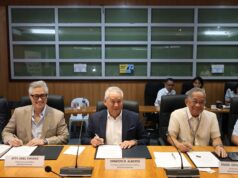LAST WEEK I attended the Catholic Educational Association of the Philippines (CEAP) Regional Assembly in Olongapo City and facilitated one of the breakout sessions with the topic Synodality and Student Well-Being. The speaker, the former basic education principal of one of the country’s top universities, started her discussion by presenting the context, circumstance and situation of today’s crop of learners. Admittedly, teachers are already familiar with this but for one reason or another, some insist on doing things the way they think is best for the learners and in the process, forgetting to acknowledge and failing to address the white elephant in the room.
“Ot makanyan kayung anak ngeni? Karayu yu anyang ikami reng magaral! Lawe na mu ning mestra mi, manahimik na kami ngan!”
There is no denying that today’s learners are miles apart compared to the learners we had say five or ten years ago, more so during our own time as learners. During our time, we never experienced a pandemic; we did not have to stay in the confines of our home and study in front of our computer screen, or with a headset connected to a mobile phone or a laptop. The effect of the two pandemic school years on the social and mental well-being of students cannot be underscored. It is something that will not simply go away just because we are now back to in-person learning modality.
For the past so many years, modern technology has prevented learners from engaging in physical activities that allow them to engage with real playmates in actual games and competitions. Gone are the days when the streets and vacant lots were teeming with students after class or during the weekends. Today, they are either in the computer shops for virtual online games, or busy with their own phones playing Mobile Legends while their playmates are located somewhere else. So now we have students who cringe at the slightest physical activity, citing exhaustion even after only a few minutes of actual work. They find themselves in a very unfamiliar territory when they face opponents in a real game or contest, not knowing how to handle and process defeat as part of any competition and as a learning process as well.
Students nowadays access information with a single click on the keyboard, prompting some experts to note that this might lead to the eventual demise of physical libraries. During our time we had to go to a library, scout all possible sources of information and if personal weekly allowance permits, have the materials photocopied. If not, note-taking is the key!
So, the question is, do we simply raise both hands as a sign of surrender and give up on our students? The answer of course, is a resounding no! These are the realities that confront today’s school administrators, teachers and even parents, who are considered as co-facilitators of learning. These are the same realities that become the bedrock of the many education reforms we need to institute in our schools that include teaching strategies, intervention and remedial programs, relevant co-curricular activities that promote holistic formation and a dynamic partnership between the school and the parents.
Perhaps one of the biggest challenges of Generation X and Y teachers in handling today’s GenZ, iGen or Centennial learners is how to “speak their language” and “dance to their music.” This is not merely knowing their lingo or appreciating their song choices. It is about putting themselves in their students’ situation, listening attentively without any preconceived notion or biases and yes, without an iota of judging. From there, teachers might just be able to really know what the learners want and need from them, and even from their families.
During the closing ceremony of the two-day assembly, our regional trustee shared his dream of one day seeing student representation in all the major activities of the school – proposing the schedule of school fees, preparing the school’s annual budget, reviewing the student handbook to formulate policies on student discipline, suggesting activities in the monthly celebrations particularly during the intramurals and the foundation celebration and ultimately, sitting as a member of the school’s board of trustees.
This might seem a far-fetched dream but then again, it may be improbable, unlikely but not impossible. The generation gap in the classroom, school or any organization will always be there. But if we remain committed to foster a culture of genuine collaboration and synodality, we can always continue to inspire and touch the life of every learner entrusted to our care.





